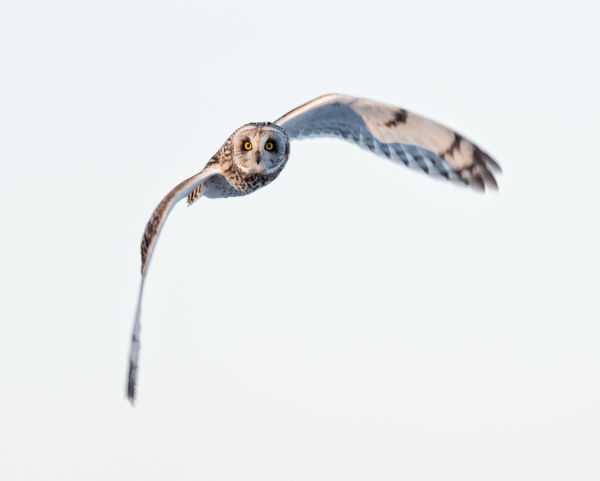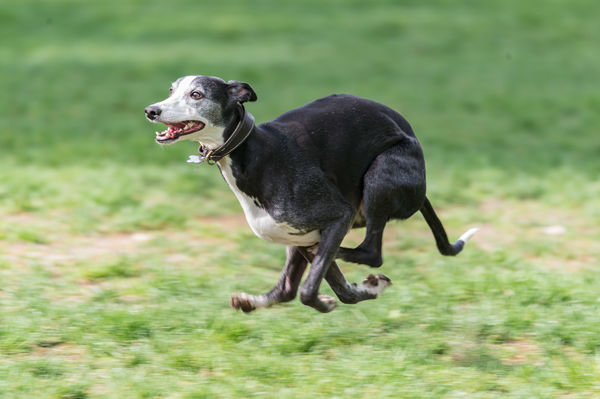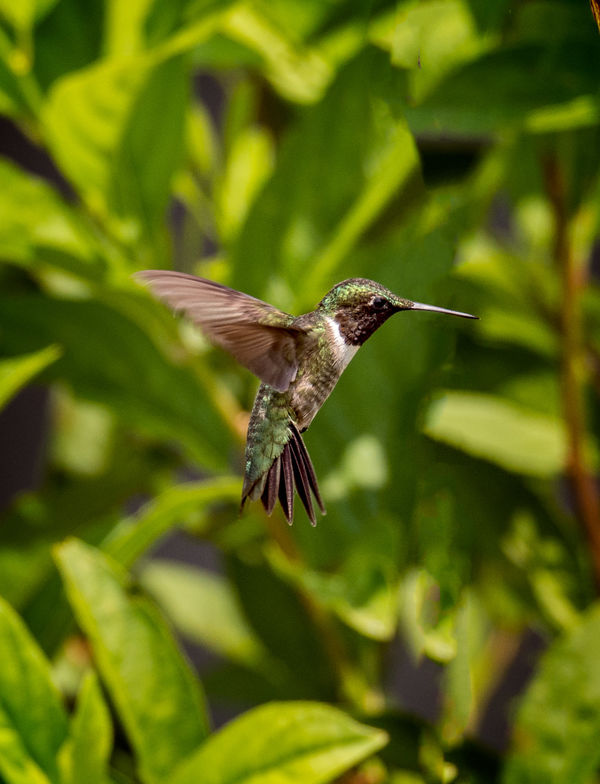Getting sharper birding Images
Sep 13, 2018 05:58:30 #
Robert Bailey wrote:
As "nmoore6" says, the lens does score better when mounted on a Nikon D610 vs a D3300.
The overall score jumps from 12 to 16
and the sharpness score jumps from 6 to 10.
https://www.dxomark.com/Lenses/Sigma/Sigma-150-500mm-F5-63-APO-DG-OS-HSM-Nikon-mounted-on-Nikon-D610---Measurements__915
The overall score jumps from 12 to 16
and the sharpness score jumps from 6 to 10.
https://www.dxomark.com/Lenses/Sigma/Sigma-150-500mm-F5-63-APO-DG-OS-HSM-Nikon-mounted-on-Nikon-D610---Measurements__915
DXO Mark scores are not intended to be comparative between cameras. What they are intended for is to compare how close a specific camera/lens combination is to the "theoretically perfect" lens. The 150-500 scores higher on the larger sensor because the combination yields better image quality. The same lens has a lower score on a crop sensor camera (and most lenses do) because the crop factor has a corresponding need for higher magnification for a given print size, and with higher magnification you get a negative impact on overall image quality.
However, if you are contemplating two different lenses on the same sensor, and one has a higher rating, then it gets closer to the "perfect" lens.
The takeaway is that the Sigma 150-500 when mounted on a full frame camera doesn't magically become sharper, compared to the same lens on a crop sensor.
DXO introduced the concept of Perceptual Megapixels to codify a lens/camera combination, and to help buyers make informed decisions about what lens/camera combo makes sense.
Here is some background:
https://petapixel.com/2012/12/17/perceptual-megapixel-mtf-charts-boiled-down-to-a-single-number/
Sep 13, 2018 06:05:48 #
While faster shutter speeds, tripods and high ISOs can most certainly help - none are a good substitute for good technique
All images below were shot hand-held using a D800 or D810, and a Sigma Sport 150-600, and 400-600mm.
The short-eared owl was shot in marginal light, ISO 800, 1/500 and F7.1, 600mm
The running dog was ISO 1000, 1/400 and F6.3, 500mm.
The hummingbird was ISO 800, 1/800, F7.1 410mm
All images below were shot hand-held using a D800 or D810, and a Sigma Sport 150-600, and 400-600mm.
The short-eared owl was shot in marginal light, ISO 800, 1/500 and F7.1, 600mm
The running dog was ISO 1000, 1/400 and F6.3, 500mm.
The hummingbird was ISO 800, 1/800, F7.1 410mm
Sep 13, 2018 06:13:01 #
Robert Bailey
Loc: Canada
Gene51- Thanks for the above link that helps to explain the dxomark test results- a good article.
Sep 13, 2018 06:48:11 #
Robert Bailey wrote:
Gene51- Thanks for the above link that helps to explain the dxomark test results- a good article.
No problem. Lots of people don't quite understand how their ratings work, or the concept of Perceptual Megapixels, and this is not helped by bloggers like Tony Northrup, who really don't get it at all, but claim that they do.
Read this thread, and pay particular attention to the TN claims, and the response from DXO that I posted.
https://www.uglyhedgehog.com/t-377405-2.html
Sep 13, 2018 08:35:35 #
nmoore6 wrote:
Will do, and looking at gimbal heads as we speak!
Check the Nest gimbal:
https://www.cameracottage.com/apps/webstore/
Camera Cottage is operated by UHH member MT Shooter. A lot of UHH users appear to love this head and the tripods as well.
Sep 13, 2018 08:50:57 #
Karl's Bird Photography wrote:
7.The best case scenario for birds is a crop frame... (show quote)
I agree. Also want to point out that I am not doing solely bird photography. I enjoy landscape and astrophotography (milky way shots specifically), where the D610 will make a huge difference. Just seeing how I can optimize my wildlife performance.
Sep 13, 2018 10:13:37 #
USE A TRIPOD , DO TARGET SHOTS IN YOUR BACK YARD , use something with sharp bright letters on it , a spry can or food can .set it up at a distance that you usually shoot birds , take pictures at different f stops , crop the pics a lot all same size , this will be a eye opener .you may find that past 450mm the lens loose sharpness . staged control shots are the best way to test .
Sep 13, 2018 11:38:58 #
A tripod will always be better or a monopod. Birds are quick and so I shoot in manual mode at 1/2000 or higher if hand held and set the aperture at f6 or higher. I've found that the depth of field is important to getting a good picture. A slight movement of the camera or bird can change everything. I also use back button focus and continuous mode. Try backing off the 500mm a little. Good luck.
Sep 13, 2018 17:45:22 #
Karl's Bird Photography wrote:
7.The best case scenario for birds is a crop frame... (show quote)
Certainly, full frame is "better" - BUT, you must pay for and carry/manage the weight of a much bigger lens for that to actually materialize .....
 - that is why, crop frame is the "better" scenario ( especially for most people).
- that is why, crop frame is the "better" scenario ( especially for most people). 
Art Morris can AFFORD and manages FF well !
..
Sep 13, 2018 20:23:46 #
billnikon
Loc: Pennsylvania/Ohio/Florida/Maui/Oregon/Vermont
imagemeister wrote:
Certainly, full frame is "better" - BUT, you must pay for and carry/manage the weight of a much bigger lens for that to actually materialize .....  - that is why, crop frame is the "better" scenario ( especially for most people).
- that is why, crop frame is the "better" scenario ( especially for most people). 
Art Morris can AFFORD and manages FF well !
..
 - that is why, crop frame is the "better" scenario ( especially for most people).
- that is why, crop frame is the "better" scenario ( especially for most people). 
Art Morris can AFFORD and manages FF well !
..
Another advantage of cropped is that you can put more EFFECTIVE MEGAPIXELS on the subject than is possible with a FF with the same lens.
Sep 14, 2018 07:42:21 #
billnikon wrote:
Another advantage of cropped is that you can put more EFFECTIVE MEGAPIXELS on the subject than is possible with a FF with the same lens.


And in good light effective megapixels is BIG deal! And most birding is not done at night. Yeah, if you are out trying to shoot owls at night, a FF might be a good idea, but in 95% of birding, you have light. And with the high ISO performance of today's cameras, the extra reach and the EM (yeah, let's start another acronym) is more important than the size of the photosites.
Sep 14, 2018 11:03:14 #
mborn wrote:
Good points. You need higher shutter speeds. I normall shoot at 1/250 or higher for BIF
I suspect that mborn meant 1/2500, not 1/250. That being the case I agree. In fact I normally use 1/3200sec. Try that first...
Sep 15, 2018 17:26:50 #
billnikon wrote:
Another advantage of cropped is that you can put more EFFECTIVE MEGAPIXELS on the subject than is possible with a FF with the same lens.
Define "effective megapixels" or provide a link. Also provide a link to how a cropped camera puts "more effective megapixels" on a subject. And why a 24 mp crop camera is suddenly providing better image quality than a 24 mp full frame camera, especially at ISO 6400. Just curious.
Are you saying that at the same distance and using the same lens, you will need to crop the FF image to get the same coverage as the crop camera? Or put another way, at the same distance and focal length, the subject will fill the frame better with a crop camera?
Sep 15, 2018 17:35:01 #
Bunkershot wrote:
I suspect that mborn meant 1/2500, not 1/250. That being the case I agree. In fact I normally use 1/3200sec. Try that first...
If I want to blur the background to show movement, and the bird is a glider, like a hawk, eagle osprey, gull, skimmer, egret, heron, etc - I will use slow shutter speeds, like 1/250 or 1/500, and pan the camera.
Sep 16, 2018 17:08:53 #
Gene51 wrote:
Define "effective megapixels" or provide... (show quote)
Did you miss the "with the same lens" part of the statement? This has been discussed frequently on this site and frequently on site dedicated to BIF photography.
If you want to reply, then register here. Registration is free and your account is created instantly, so you can post right away.






